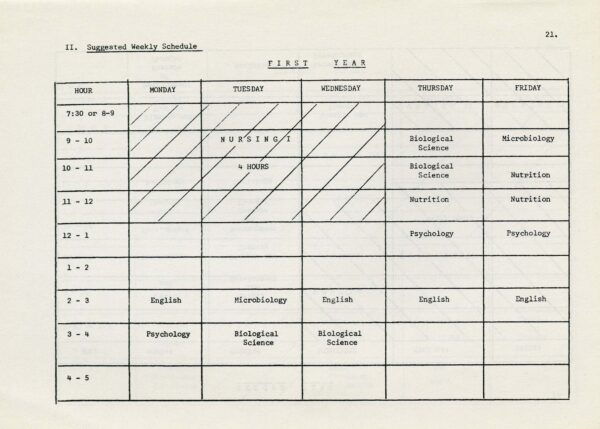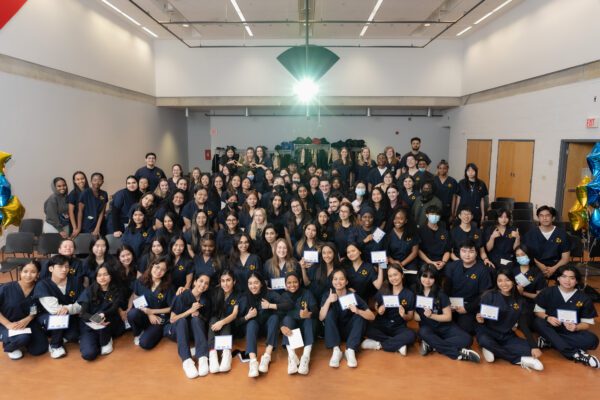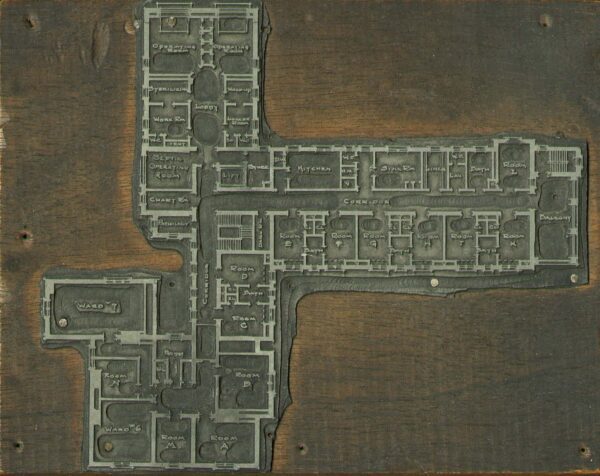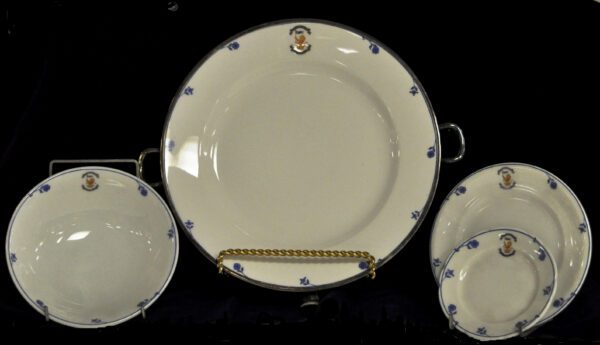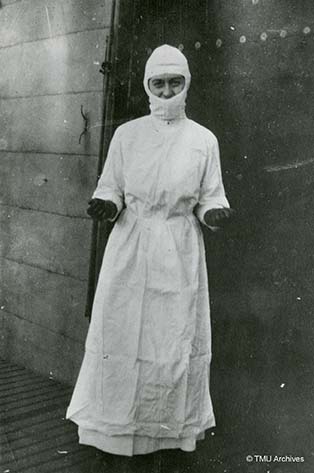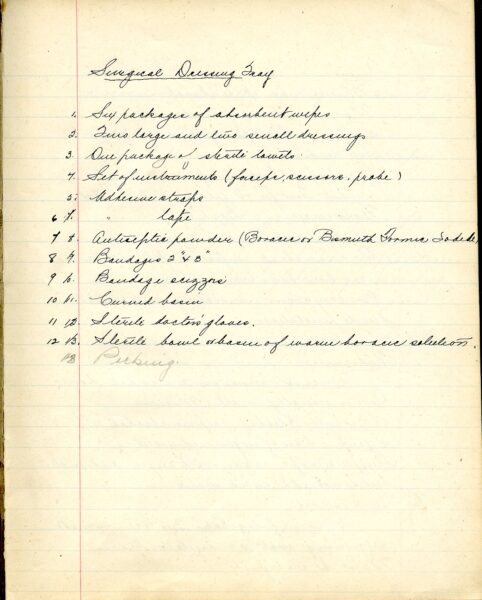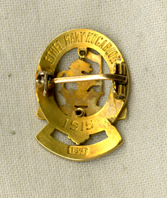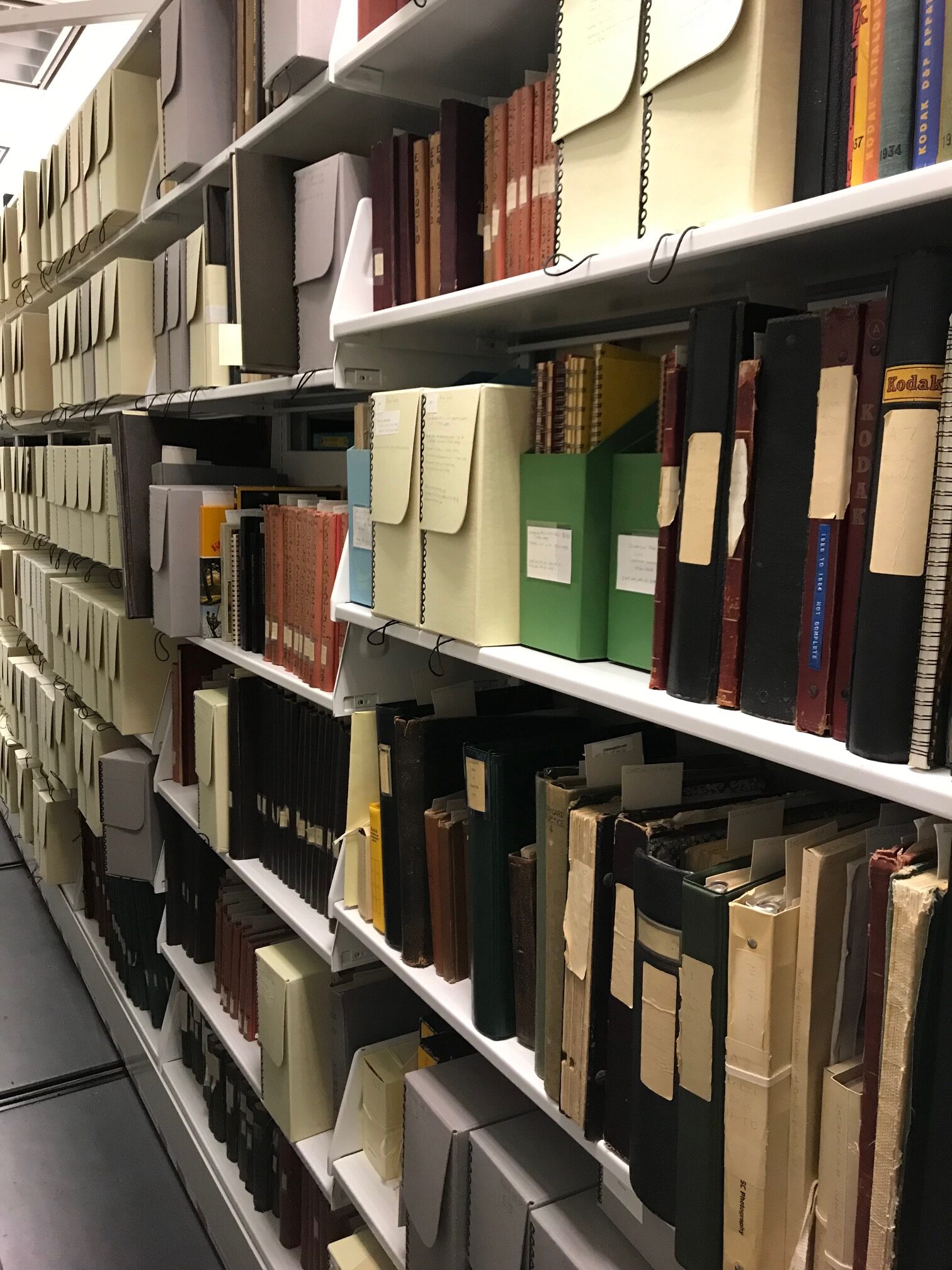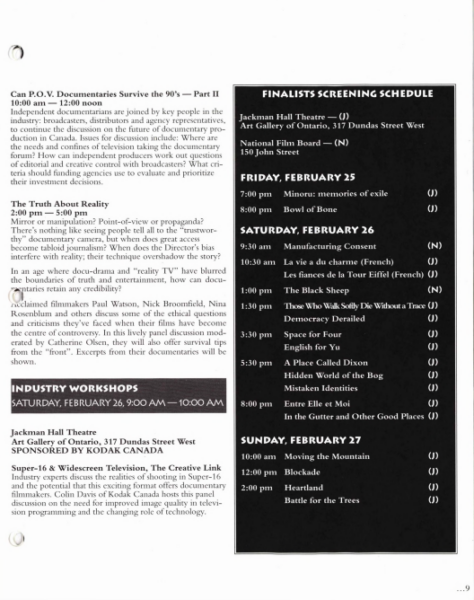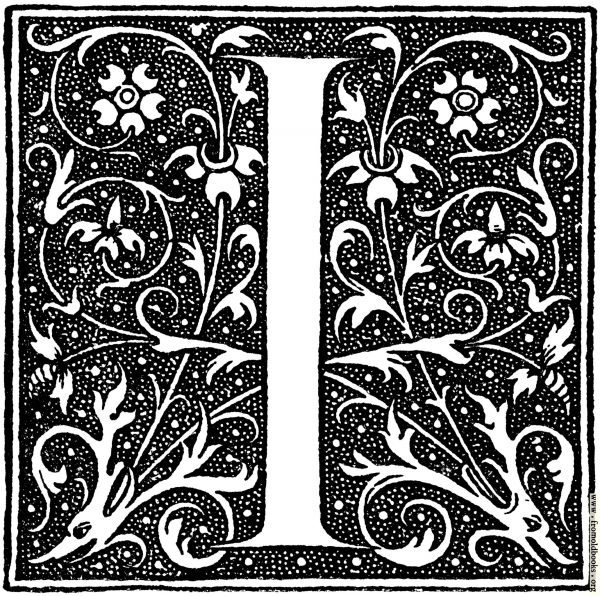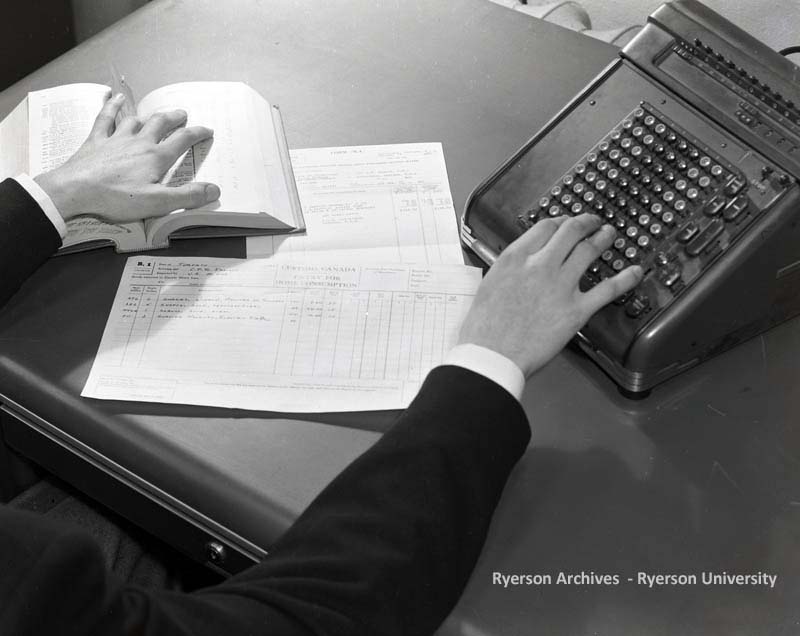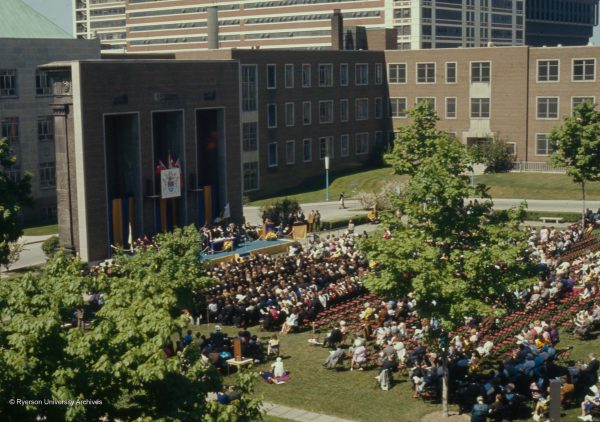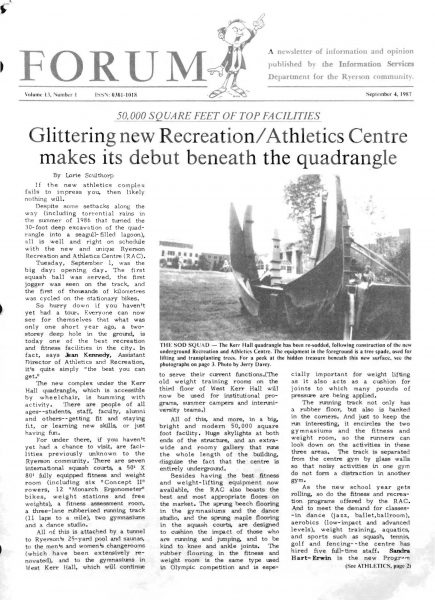In 1973 the face of nursing education would change in Ontario with the move of Hospital Schools of Nursing into collegiate settings. In celebration of the 50th anniversary of the amalgamation of the Ryerson School of Nursing (now the Daphne Cockwell School of Nursing – DCSN) with the nursing schools from the Hospital for Sick Children, Women’s College Hospital, and The Wellesley Hospital, The TMU Archives, The Wellesley Hospital School of Nursing Alumnae Association (WHSNAA) and The DSCN partnered to create an anniversary exhibition. The physical display, housed in the DCSN administrative offices, features artifacts and photographs that give you a window into the history of the Wellesley Hospital School of Nursing, the WHSNAA, and the DSCN. The online component of the exhibit, consisting of two blogs, will take an in-depth look at the topics introduced in the physical exhibit.
This second blog looks at The Wellesley Hospital School of Nursing Alumnae Association, the Ryerson School of Nursing (1964-2007), Amalgamation: the end of hospital schools of nursing, the Last graduation(s), and the Daphne Cockwell School of Nursing (2008-2024). To view the first blog, visit https://library.torontomu.ca/asc/2024/05/from-hospital-hallways-to-campus-classrooms-the-50th-anniversary-of-amalgamation-part-1/
The Wellesley Hospital School of Nursing Alumnae Association
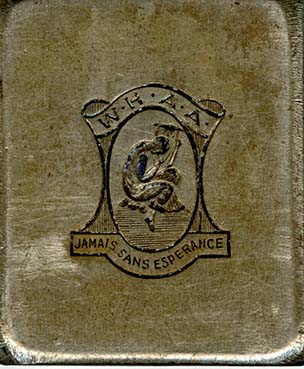
The Wellesley Hospital School of Nursing Alumnae Association, originally the Wellesley Hospital Alumnae Association (WHAA), was formed with the guidance of Director of Nursing Elisabeth Flaws in 1915 with the first graduating class of 10 nurses. Its purpose, according to the 1975 constitution, is the promotion of friendship amongst members, upholding the highest standards of the nursing profession, and assisting with nursing education. Shortly after its formation the group became involved in volunteer work in support of Canada in the WWI. Graduates and students made medical dressings including “fluffs” (an iodoform infused cotton gauze roll with adhesive straps to cushion the wound) to send overseas.

In 1926 after the death of Elisabeth Flaws, her brother started a scholarship in her name for Wellesley students. The Association oversaw this fund, as well as two others used to assist graduates in furthering their education and to aid current students. They also donated equipment to the hospital and participated in fundraising for the new 1947 wing of the hospital, donating furnishings to the cause. During WWII the Alumnae Association became an auxiliary Red Cross Unit. Members knitted goods, sewed ditty bags, mailed gift boxes to Wellesley Alumnae serving overseas, and supplied boxes of food, toys, and clothing for schools in England, a tradition that lasted until the 1950s. By the end of WWII the association became more of a social organization.

The WHSNAA continued its role of giving and supporting nursing education even after the hospital schools of Nursing were moved to the Ministry of Colleges & Universities in 1973. Two scholarships began being awarded to active members of the Association who wanted to continue their education at the university level. As of 1987 there were 6 awards handed out – the Elisabeth Flaws Memorial Scholarship, the Elsie K. Jones Scholarship, the A. Joyce Bailey Scholarship, the Elsie K. Jones LaVenture memorial bursary, the President’s Bursary, and the Mrs. Herbert A. Bruce Memorial award. Until the hospital closed in 1998, several scholarships and awards were also offered on a rotating basis to registered nurses employed at The Wellesley. The Alumnae Association established an endowment in 2007 for an undergraduate nursing award for students enrolled in the Daphne Cockwell School of Nursing. In 2011 The Wellesley Hospital School of Nursing Alumnae Association gifted its archival collection to the University Archives and established an endowment to support its ongoing care and conservation.

In 2021 they funded The Wellesley Hospital School of Nursing Alumnae Association Forum through DCSN. The forum’s objective is the support of on-going learning, scholarship and professional practice of Faculty and students in the school by providing them with an outlet to highlight their work and research. The first forum was held virtually in December 2021 with Dr. Maher El-Masri as the first speaker.

To learn more about The Alumnae Association visit this website https://www.torontomu.ca/nursing/undergraduate/student-resources/nursing-alumni-associations/
Ryerson School of Nursing (1964-2007)
The Ryerson School of Nursing started as an experiment. In 1963 “The Ryerson Project” was undertaken by the Registered Nurses Association of Ontario (RNAO), Ryerson Institute of Technology, and the Department of Education to develop a nursing program at Ryerson. The project proposed a five year trial period with the aim that similar courses would be offered at other colleges at the end. Provisional approval was given by the College of Nurses of Ontario and the 3 year diploma course started in the Fall of 1964 with 21 students.
A large classroom was converted into a nursing laboratory with 12 hospital beds and equipment for instruction and practice. Clinical experience was attained at the Doctor’s Hospital and the Queensway General Hospital. In 1968 one semester post-diploma courses began being offered. The first was Psychiatric Nursing (1968-1976), followed by Pediatric Nursing (Fall 1969-1976), and Intensive Care Nursing (Fall 1970-1997).

In 1971 The Ryerson Report “Learning to Nurse: The First Five Years of the Ryerson Nursing Program”, authored by Dr. Moyra Allen and Mary Reidy was published by the RNAO. The report looked at the first 5 years of the program, following students through their schooling, graduation, and into the workforce. Also in 1971, Ryerson was given degree granting status which led the School of Nursing to begin planning for a degree program. The amalgamation of hospital school’s of nursing in 1973 resulted in the introduction of a new consolidated curriculum being introduced in the Fall of 1974.

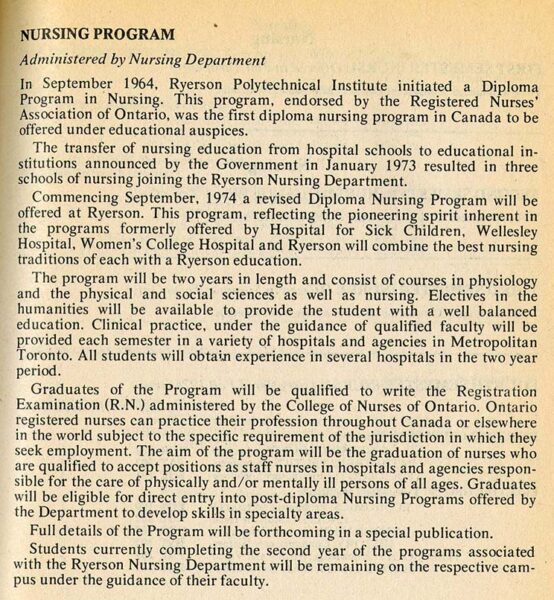
In Fall 1980, the first class of post-diploma graduate nurses were admitted into the new 2 year degree completion program – earning a Bachelor of Applied Arts – Nursing. The degree had three areas of specialization – psychiatric, medical-surgical, and pediatric and like its diploma predecessor, it was the first of its kind in Canada. In 1983 a part-time option was introduced through Continuing Education. Nursing courses were held at 8 off-campus locations – Scarborough, Newmarket, Mississauga, Toronto West, University Avenue, Durham, Kitchener-Waterloo, and Hamilton.

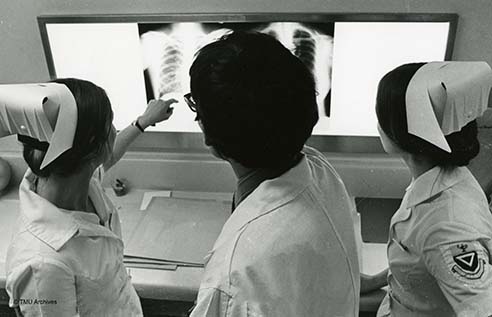
In 1985 a Critical Care Nursing certificate was introduced in partnership with Toronto General Hospital, and it was announced the Diploma program would be phased out – replaced by a 4 year degree. In 1987, in conjunction with Continuing Education, the School of Nursing began offering a certificate in Nursing Management. The program won an award of distinction from the Canadian Association of University Continuing Education. The first class in the new 4 year degree program started in the Fall of 1988 and the final class of diploma students graduated in 1989.

Through the 1990’s the program continued to evolve. It achieved the highest level of accreditation for a Canadian Nursing School from the Canadian Association of University Schools of Nursing (CAUSN) in 1993. In 1994 the Bachelor of Applied Arts – Nursing was changed to Bachelor of Science – Nursing (BScN). In September 1995 Ryerson’s School of Nursing, along with 9 other universities, partnered with the Provincial Ministry of Health to offer a Nurse Practitioner programme. The course ran 12 months for registered nurses, and 24 months for diploma nurses and was fully funded by the Ministry for its first 5 years.

The next major addition to the school was in 2001 when it was announced that, in collaboration with George Brown and Centennial Colleges, Ryerson would offer a 4-year collaborative nursing degree. This was the result of government legislation requiring that, as of 2005, a baccalaureate degree requirement for all nurses that wanted to become Registered Nurses. The new program had 3 points of enrollment – Ryerson, George Brown, and Centennial. Ryerson students would spend all four years on campus. George Brown and Centennial students would complete the first 2 years of the program on their campuses, last 2 years at Ryerson and all their practical requirements would be supervised by their College faculty.

In 2005 the Masters of Nursing degree was introduced and in 2006 a post-Master’s Primary Health Care Nurse Practitioner certificate, an intensive program to prepare nursing professionals to write the Canadian Nurse Practitioner Examination. In 2007 the post-degree programme changed its name to Post-diploma degree programme to allow admission of students from international bridging programmes at Centennial and George Brown Colleges.
Amalgamation: the end of hospital schools of nursing
There had been talk of and suggestions to move schools of nursing out of the hospitals since the early 20th century but it was not actualized until 1973. On January 11, 1973, a joint letter, accompanied by a booklet of guidelines for the transition, from the Minister of Health and the Minister of Colleges and Universities was sent to the Hospital Nursing Schools, Ryerson Polytechnical Institute (RPI) and the Colleges of Applied Arts and Technology (CAAT) in Ontario. As a result, RPI’s school of nursing would amalgamate with the Women’s College Hospital’s, the Hospital for Sick Children’s and the Wellesley Hospital’s schools of nursing.

The guidelines for amalgamation mandated the establishment of transition task forces to plan the transition – with members representing all affected schools. The RPI taskforce established 3 main committees with each one addressing different parts of the amalgamation process that would see an additional 375 students, 75 faculty and 18 staff people being added into the RPI nursing program.
The Curriculum and Clinical facilities committee planned the continuity of the existing nursing programs for 1973-1975, and the planning of a new curricular model for the future program that included admission and clinical requirements. The committee’s outcomes included the maintenance of the 4 separate campuses until the end of the 1974-1975 school year (where Ryerson would pay rent to the respective hospitals for the space) and the adoption of the current RPI diploma structure (6 semester program) be adopted as the basic model for future curricular changes.
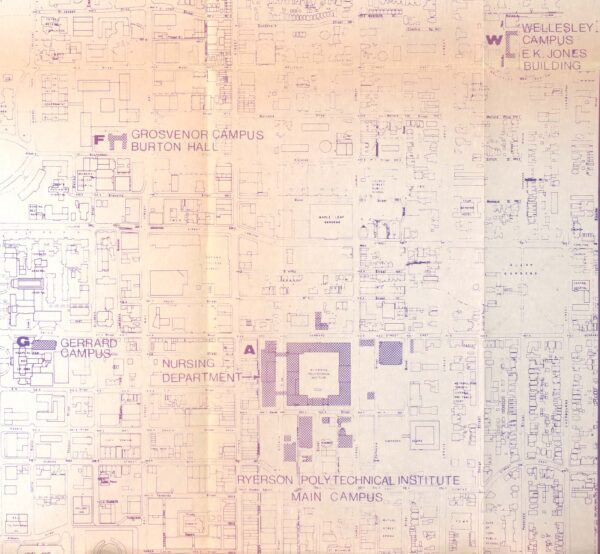
The Teacher Student affairs and Internal resources committee was divided into sub-committees because of the wide scope of their terms of reference. They included the student affairs, teacher affairs, internal resources and student services sub-committees. Some of the outcomes from these committees included: the design of a new uniform for 1975-1976 school year; the responsibility for securing housing fall to the students themselves; graduation planning being undertaken by RPI for the 1975 graduating year; the establishment of the hospital school of nursing department heads as assistant chairpersons in the RPI school for the 1973-1975 period; the transfer and relocation of the school of nursing libraries to RPI’s library by 1975; and the transfer of all student records to RPI’s student records department.

The Administrative and Finance Committee was also divided into subcommittees. The finance and budget subcommittee looked at financial matters including budget estimates for funding and payroll. The organization subcommittee addressed organization and administrative structuring, support service requirements and space facilities. The personnel subcommittee looked at the transfer of personnel records to RPI’s HR department and other issues related to payroll, pensions, and benefits.
The final report was published in January 1974.

Quick facts about The Hospital for Sick Children and Women’s College Hospital Schools of Nursing
Hospital for Sick Children School of Nursing
The oldest school of the three, Sick Children’s Hospital, graduated its first “class” of nurses in 1888 – with one graduate, Josephine Hamilton, receiving her certificate. You can learn more about the Hospital for Sick Children’s School of Nursing Alumnae Association by visiting their website https://hscnursingalumnae.org/
Women’s College Hospital School of Nursing
Women’s College Hospital School of Nursing graduated its first class of 2 nurses in 1918. Their Alumnae Association disbanded in 2019. You can learn more about the school and the alumnae association in on online exhibit titled “Welcome to Our School – The history of the Women’s College Hospital School of Nursing as told by its students” https://www.communitystories.ca/v2/womens-college-nursing_ecole-infirmieres-womens-college/.
.
The last graduation(s)

The last graduation ceremony organized by the individual hospitals was in 1974, with responsibility for the ceremony moving to Ryerson Polytechnical Institute for the 1975 ceremony.


The final graduation for the Wellesley Hospital’s, Women’s College Hospital’s (WCH) and Hospital for Sick Children’s schools of Nursing was held June 2, 1975 at 7:30 pm at the Ryerson Theatre.



The 160 graduating nurses received a specially worded diploma highlighting their hospital affiliation and graduation pins featuring the Ryerson crest with a small hospital crest or logo attached with a small chain.

Each school had its own valedictorian speaker – Sheena Elliot for Wellesley, Catherine Messenger for HSC, and Veronica Gee for WCH. Platform guests included the assistant chairmen from each program and members of the Hospital’s Board of Governors.

The Daphne Cockwell School of Nursing (2008-2024)
The next major change to the Ryerson School of Nursing came in 2008. Jack Cockwell, at the time a member of the University’s Board of Governors, donated $5 million towards the construction of a new building for the Nursing program. The Ryerson School of Nursing became the Daphne Cockwell School of Nursing (DCSN) after the donor’s mother who was a nurse. It would be another first for the school – the first to be named after an actual nurse.

Also in 2008, the school hosted its first Annual research day – with the theme of “Partnering of Knowledge Exchange”. The conference was open to faculty and students at DCSN and other institutions. The annual research day was held until 2015.
In 2014 the School of Nursing celebrated its 50th anniversary.
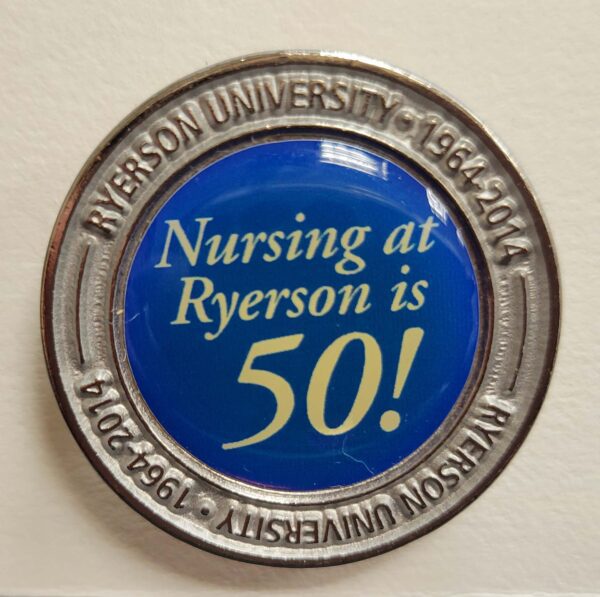


In the Fall of 2019, the Daphne Cockwell Health Sciences Complex was opened (https://www.torontomu.ca/news-events/news/2019/12/full-house-at-grand-opening-of-the-daphne-cockwell-health-sciences-complex/). The building is home to the DCSN, School of Nutrition, Midwifery program, and School of Occupational and Public Health. It has 8 stories of classroom and administrative space plus an additional 18 storey residence for students.


In 2021 the Urban Health Doctoral program was launched (https://www.torontomu.ca/graduate/programs/urban-health-phd/). The interdisciplinary degree is open to applicant’s with a masters degree in nursing, social work, urban development, early childhood studies, occupational and public health, disability studies, midwifery, youth and child care, nutrition, medicine, pharmacy, or dentistry and is administered by DCSN.
From its start as a government experiment in diploma nursing to a school offering 2 undergraduate degrees, 1 professional certificate, and 2 graduate level degrees, the Daphne Cockwell School of Nursing has come a long way and we can’t wait to see what its future holds.
To view the first part of this blog visit https://library.torontomu.ca/asc/2024/05/from-hospital-hallways-to-campus-classrooms-the-50th-anniversary-of-amalgamation-part-1/





